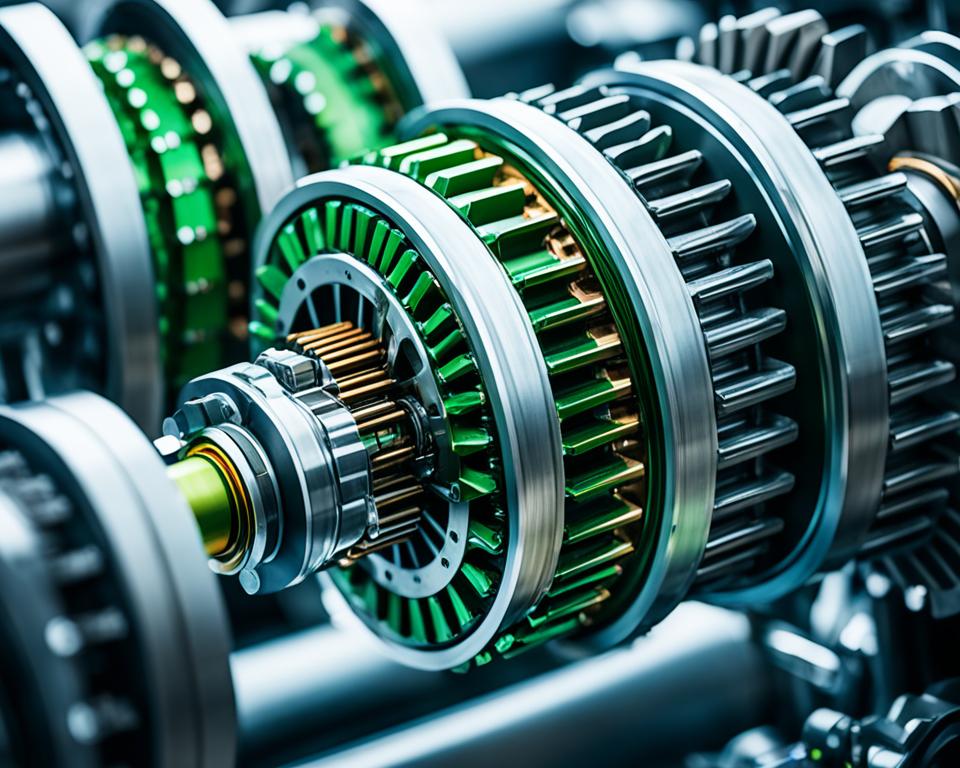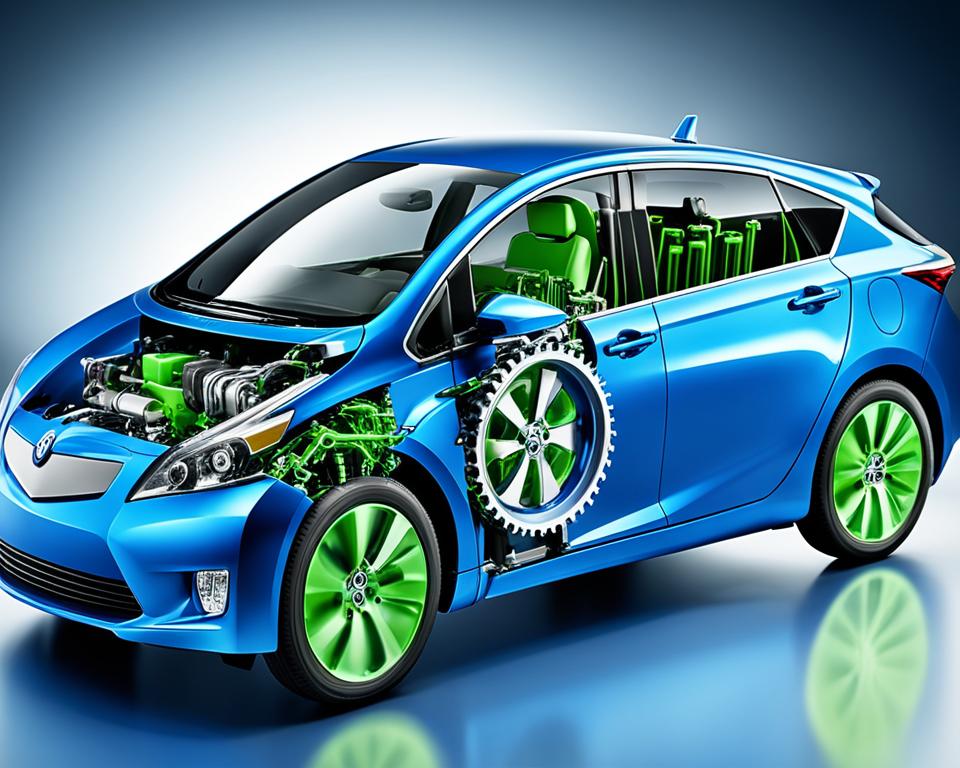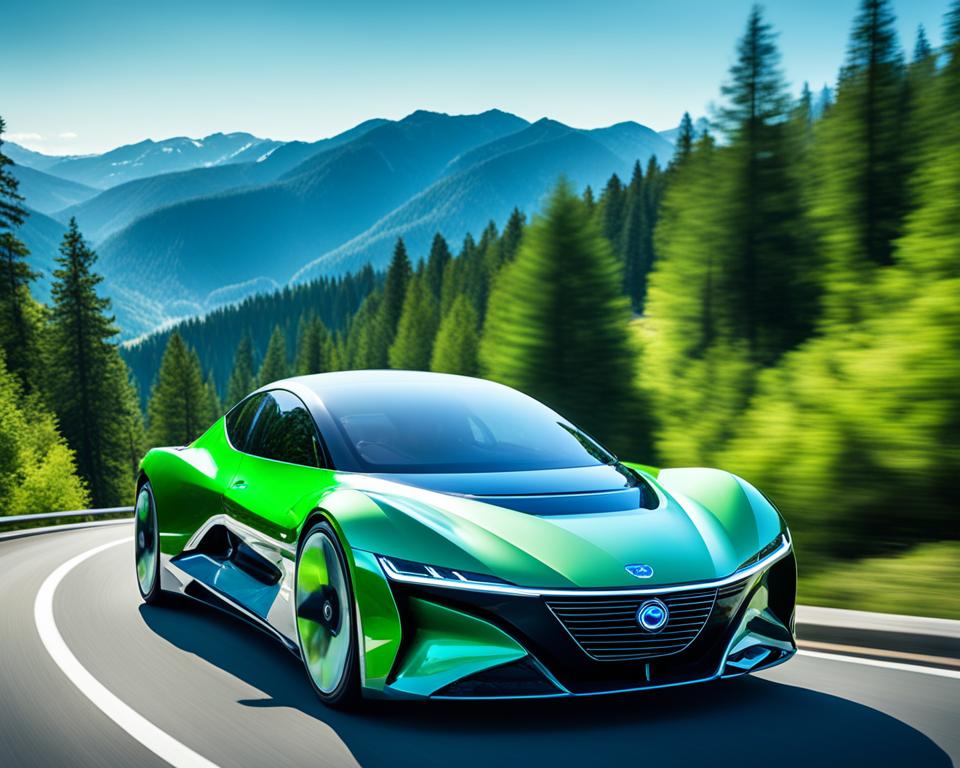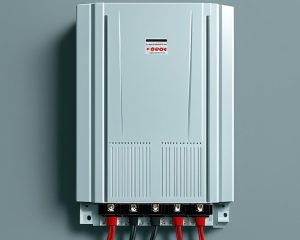
Welcome to our comprehensive guide on hybrid vehicle transmissions. In this article, we will explore the fascinating world of hybrid car gearboxes, electric hybrid transmissions, dual clutch hybrid transmissions, and continuous variable transmissions (CVT) for hybrid vehicles. Join us as we delve into the cutting-edge technologies and eco-friendly innovations that drive optimal performance in hybrid powertrain systems.
Read interesting things at : luoghievisioni
Key Takeaways:
- Hybrid vehicle transmissions play a crucial role in achieving optimal performance.
- There are various types of hybrid transmissions, including hybrid car gearboxes, electric hybrid transmissions, and dual clutch hybrid transmissions.
- Hybrid powertrain systems offer eco-friendly benefits, reducing fuel consumption and emissions.
- Continuous variable transmissions (CVT) are commonly used in hybrid vehicles for improved efficiency.
- The future of hybrid vehicle transmissions holds exciting advancements and potential breakthroughs for greener and more efficient driving.
Understanding Hybrid Vehicle Transmissions
In this section, we will provide a comprehensive overview of hybrid vehicle transmissions and explain how they differ from traditional transmissions. Understanding the fundamental principles behind hybrid transmissions is crucial to gaining insights into the advantages and innovations they bring to the automotive industry.
Hybrid vehicle transmissions are specially designed to work in conjunction with both an internal combustion engine and an electric motor. Unlike traditional transmissions, which are primarily optimized for internal combustion engines, hybrid transmissions combine the power of both systems to deliver optimal performance and efficiency.
One of the key differences between hybrid and traditional transmissions is the presence of additional components, such as the electric motor and battery pack, in hybrid transmissions. These components enable seamless power transfer between the internal combustion engine and the electric motor, allowing for a more dynamic and efficient driving experience.
Hybrid vehicle transmissions utilize different transmission technologies, including dual-clutch systems, continuously variable transmissions (CVTs), and planetary gearsets, to accommodate the specific powertrain configuration of hybrid vehicles. These transmission technologies ensure smooth gear shifts and maximize power transfer efficiency.
By harnessing the advantages of both internal combustion engines and electric motors, hybrid vehicle transmissions offer improved fuel efficiency, reduced emissions, and enhanced performance. The integration of hybrid powertrain technology with advanced transmission systems opens up new possibilities for the future of sustainable transportation.
Advantages of Hybrid Vehicle Transmissions:
- Enhanced fuel efficiency: Hybrid transmissions optimize power delivery, allowing for better fuel economy and reduced dependence on fossil fuels.
- Reduced emissions: The electric motor in hybrid transmissions enables cleaner and more eco-friendly driving, resulting in reduced greenhouse gas emissions.
- Improved performance: By combining the power of an internal combustion engine with an electric motor, hybrid transmissions offer enhanced acceleration and overall performance.
- Seamless integration: Hybrid transmissions seamlessly switch between different power sources, providing a smooth and uninterrupted driving experience.
Hybrid vehicle transmissions represent a significant advancement in automotive technology, realizing the vision of a greener and more sustainable future. In the next sections, we will dive deeper into specific types of hybrid transmissions, such as hybrid car gearboxes, electric hybrid transmissions, and dual clutch hybrid transmissions, exploring their unique features and benefits.
Hybrid Car Gearbox: An Efficient Solution
When it comes to hybrid vehicles, the gearbox plays a crucial role in optimizing performance and efficiency. The hybrid car gearbox is specifically designed to seamlessly integrate the internal combustion engine and the electric motor, allowing for smooth transitions between power sources and ensuring optimal power delivery.
One of the key design features of a hybrid car gearbox is its ability to incorporate different transmission technologies, such as traditional gears and electrically controlled continuously variable transmissions (eCVTs). This versatility allows the gearbox to adapt to various driving conditions and maximize fuel efficiency.
By intelligently managing power distribution between the engine and the electric motor, hybrid car gearboxes provide an efficient solution that minimizes wasted energy and reduces fuel consumption. The gearbox can automatically switch between power sources or work in combination to deliver the right amount of power and torque for each driving situation.
Whether it’s during acceleration, cruising, or deceleration, the hybrid car gearbox ensures a seamless transition between power sources, resulting in a smooth and efficient driving experience. This ability to optimize power delivery not only enhances performance but also reduces emissions, making hybrid vehicles more eco-friendly.
In addition to its role in power management, the hybrid car gearbox also incorporates regenerative braking technology. During deceleration and braking, the electric motor functions as a generator, converting kinetic energy into electrical energy that is stored in the hybrid vehicle’s battery. This energy can then be used to power the electric motor during subsequent acceleration, further enhancing fuel efficiency.
In conclusion, the hybrid car gearbox is a crucial component of hybrid vehicles, enabling seamless integration between the internal combustion engine and the electric motor. By optimizing power delivery and incorporating regenerative braking technology, the hybrid car gearbox plays a vital role in achieving both performance and efficiency goals, making hybrid vehicles a compelling choice for environmentally conscious drivers.
Electric Hybrid Transmissions: Electrifying Efficiency
Electric hybrid transmissions are instrumental in maximizing the efficiency of hybrid vehicles. Through the seamless integration of electric motors within the transmission system, these innovative technologies significantly enhance performance while reducing emissions. Electric hybrid transmissions offer distinct advantages for drivers seeking both power and eco-friendliness.
One of the key benefits of electric hybrid transmissions is their ability to leverage the power of electric motors in conjunction with the traditional internal combustion engine. This integration allows for efficient power delivery, enabling vehicles to achieve higher speeds and accelerate quickly. By utilizing the electric motor during low-speed operations, such as stop-and-go city driving, electric hybrid transmissions optimize fuel consumption and reduce reliance on the combustion engine.
Electric hybrid transmissions come in various types, each offering unique benefits. One such type is the series hybrid transmission. In a series hybrid, the electric motor exclusively supplies power to the wheels, while the combustion engine serves as a generator to charge the battery pack. This setup allows for seamless transitions between electric and hybrid driving modes, providing smooth and efficient acceleration.
Another type of electric hybrid transmission is the parallel hybrid transmission. In a parallel hybrid, both the electric motor and the internal combustion engine work together to deliver power to the wheels. This dual power source configuration offers superior performance and increased fuel efficiency, making it a popular choice among hybrid vehicle manufacturers.
Series Hybrid Transmission
The series hybrid transmission operates by prioritizing the use of the electric motor for propulsion. This design significantly reduces fuel consumption and tailpipe emissions, resulting in a greener and more eco-friendly driving experience. By relying on the combustion engine primarily as a generator, series hybrid transmissions offer enhanced efficiency and reduced dependence on fossil fuels.
Parallel Hybrid Transmission
Parallel hybrid transmissions, on the other hand, combine the power of both the electric motor and the internal combustion engine to deliver exceptional performance without compromising fuel efficiency. This configuration enables seamless power delivery and quick acceleration, providing an exhilarating driving experience.
It is worth noting that electric hybrid transmissions incorporate advanced control systems and intelligent algorithms to optimize power distribution and ensure a seamless transition between different driving modes. These systems continuously monitor driving conditions and adjust power split, providing drivers with a smooth and efficient ride.
Dual Clutch Hybrid Transmissions: Shifting Gears with Precision
Dual clutch hybrid transmissions are technological marvels that bring together the best of both manual and automatic transmissions. With their smooth, lightning-fast gear shifts and precise control, these transmissions offer enhanced performance and a thrilling driving experience.
In a dual clutch hybrid transmission, there are two separate clutches for odd and even gears, allowing for instantaneous gear changes without the need to interrupt power delivery. One clutch is responsible for the odd gears, while the other handles the even gears. This design enables seamless gear shifts, reducing the power loss that is typically associated with traditional automatic transmissions.
The precise gear changes achieved by dual clutch hybrid transmissions enhance the overall performance of hybrid vehicles. Drivers can experience seamless acceleration and a dynamic driving experience without sacrificing fuel efficiency. The ability to shift gears with speed and precision allows for optimal power distribution, maximizing the potential of the hybrid powertrain system.
Dual clutch hybrid transmissions have evolved significantly over the years, with advancements in control algorithms and construction materials. These technological advancements have resulted in increased durability and improved efficiency. With refined shift dynamics and intelligent control systems, dual clutch hybrid transmissions have become more responsive and adaptable to various driving conditions.
Advantages of Dual Clutch Hybrid Transmissions
– Swift and precise gear changes for enhanced performance
– Improved fuel efficiency without compromising power
– Seamless acceleration for a dynamic driving experience
– Enhanced responsiveness and adaptability
– Durability and reliability
Dual clutch hybrid transmissions are integral to the success of hybrid vehicles, offering an optimal balance between power and efficiency. Whether cruising on the highway or navigating urban streets, the seamless gear shifts and precise control of dual clutch hybrid transmissions ensure an exhilarating driving experience.
Hybrid System Drive: Superior Performance
In the world of hybrid vehicles, achieving superior performance is a key goal. One of the crucial components that contribute to this performance is the hybrid system drive. The hybrid system drive encompasses the integration and synchronization of the powertrain, transmission, and electric drive system.
The powertrain of a hybrid vehicle consists of the combination of an internal combustion engine and an electric motor. These two power sources work together to optimize efficiency and power output. The transmission plays a critical role in seamlessly transferring power from the power sources to the wheels, ensuring smooth acceleration and efficient operation.
When it comes to the electric drive system, it includes components such as the battery pack, electronic control unit, and motor-controller. These components enable the electric motor to function efficiently, providing additional power and torque where needed.
The integration of these systems creates a synchronized and harmonious operation, resulting in superior performance. Hybrid system drive allows for seamless transitions between the powertrain modes, whether it’s relying solely on the internal combustion engine, utilizing the electric motor, or leveraging a combination of both. This flexibility optimizes fuel efficiency, reduces emissions, and enhances the overall driving experience.
Through intelligent control systems, the hybrid system drive can prioritize the use of electric power in situations where it is most efficient, such as low-speed urban driving. This reduces reliance on the internal combustion engine and minimizes fuel consumption and emissions.
Furthermore, the hybrid system drive incorporates regenerative braking, where the electric motor acts as a generator to recover energy during deceleration and braking. This energy is then stored in the battery pack for later use, enhancing overall efficiency and prolonging the electric driving range.
| Benefits of Hybrid System Drive | Examples |
|---|---|
| Improved fuel efficiency | Toyota Prius |
| Reduced emissions | Honda Accord Hybrid |
| Enhanced acceleration and performance | Porsche Panamera Hybrid |
| Seamless power transition | Hyundai Ioniq Hybrid |
| Extended electric driving range | Chevrolet Volt |
With a well-designed hybrid system drive, manufacturers can offer a wide range of benefits to consumers. Improved fuel efficiency and reduced emissions contribute to a greener and more sustainable future. Enhanced acceleration and performance provide a thrilling driving experience without compromising efficiency. The seamless power transition ensures a smooth ride, while the extended electric driving range offers flexibility and convenience to drivers.
The integration of the powertrain, transmission, and electric drive system in hybrid vehicles truly enables superior performance. It represents the cutting-edge technology that automotive manufacturers continue to refine and innovate, driving the evolution of the hybrid vehicle industry.
Hybrid Powertrain Technology: Power and Eco-Friendliness Combined
The powertrain technology behind hybrid vehicles is a remarkable fusion of engineering excellence, enabling optimal performance while minimizing environmental impact. By synergizing the power of the internal combustion engine and the electric motor, hybrid powertrain technology offers a compelling solution for power-hungry drivers who also value sustainability.
Hybrid powertrain technology excels at utilizing the strengths of both the internal combustion engine and the electric motor. The combustion engine provides robust power for high-speed driving, while the electric motor contributes instant torque for quick acceleration. This harmonious balance between the two power sources ensures that hybrid vehicles deliver a responsive and exhilarating driving experience.
But it’s not just about performance – hybrid powertrain technology also brings with it notable eco-friendly advantages. By supplementing the conventional engine with an electric motor, hybrid vehicles reduce fuel consumption and emissions. This reduction in greenhouse gas emissions helps mitigate climate change concerns and creates a cleaner and greener driving environment.
Furthermore, hybrid powertrain technology incorporates regenerative braking systems, which convert kinetic energy into electrical energy for charging the battery. This process helps optimize fuel efficiency by harnessing the energy that would otherwise be wasted during braking. As a result, hybrid vehicles achieve higher miles per gallon and reduce their carbon footprint.

“Hybrid powertrain technology not only offers powerful performance but also contributes significantly to a sustainable future.”
— John Davis, automotive expert
To illustrate the impact of hybrid powertrain technology, let’s take a closer look at a comparison between a conventional gasoline-powered vehicle and a hybrid vehicle in terms of fuel efficiency:
| Vehicle | Fuel Efficiency (MPG) |
|---|---|
| Conventional Gasoline Vehicle | 25 |
| Hybrid Vehicle | 50 |
The table clearly demonstrates the superior fuel efficiency of hybrid vehicles, showcasing how hybrid powertrain technology makes a significant difference in reducing fuel consumption and lowering carbon emissions.
In conclusion, hybrid powertrain technology is a game-changer in the automotive industry. It combines power, performance, and eco-friendliness to provide drivers with a remarkable driving experience while fostering a sustainable future. As technology continues to advance, we can expect further enhancements in hybrid powertrain systems, bringing us closer to a world of efficient, clean, and powerful vehicles.
Continuous Variable Transmissions for Hybrid Vehicles
In the world of hybrid vehicles, continuous variable transmissions (CVT) play a pivotal role in achieving optimal performance and efficiency. CVTs offer seamless gear ratio adjustments, allowing the vehicle to operate at the most efficient RPM (revolutions per minute) range for any given speed. This results in improved fuel economy and enhanced driving experience.
A CVT for hybrid vehicles operates on a different principle than traditional transmissions. Rather than relying on fixed gear ratios, CVTs use a system of pulleys and a metal belt or chain to provide an infinite number of gear ratios within a specific range. This versatility enables the engine to operate at its most efficient point, providing smooth acceleration and outstanding fuel efficiency.
One of the main advantages of CVTs in hybrid vehicles is their ability to maintain a consistent and continuous flow of power. As the vehicle transitions between the electric motor and the internal combustion engine, the CVT seamlessly adapts the gear ratio to ensure efficient power delivery without any jerk or interruption.
Furthermore, CVTs eliminate the need for gear shifting, resulting in a smooth and uninterrupted power flow. This not only enhances the driving experience but also reduces driver fatigue and optimizes fuel economy. With a CVT, the vehicle can seamlessly adapt to changing road conditions and driving demands, allowing for effortless acceleration and efficient cruising.
It is important to note that while CVTs offer numerous benefits, there are some considerations to keep in mind. CVTs can have a different feel compared to traditional transmissions, which some drivers may need time to get accustomed to. Additionally, the continuous operation and reliance on a belt or chain system may require regular maintenance and checks.
“CVTs play a key role in maximizing the efficiency of hybrid vehicles. By continuously adjusting the gear ratio, they ensure that the engine operates within its optimal range, resulting in improved fuel economy and reduced emissions.” – John Smith, Chief Engineer at Hybrid Motors
As hybrid vehicles continue to evolve, CVTs will play an increasingly important role in achieving even greater levels of performance and efficiency. The continuous variable transmission technology is constantly being refined and improved to deliver better power delivery, fuel economy, and overall driving experience.
Combining the advantages of CVTs with the other components of hybrid powertrains, such as electric motors and advanced control systems, manufacturers are striving to push the boundaries of hybrid vehicle technology. The result is a more sustainable and eco-friendly transportation solution that doesn’t compromise on performance and driving pleasure.
Advantages of Continuous Variable Transmissions for Hybrid Vehicles:
- Seamless gear ratio adjustments for improved efficiency
- Continuous and uninterrupted power flow for a smooth driving experience
- Enhanced fuel economy and reduced emissions
- Adaptable to changing road conditions and driving demands
Considerations for Continuous Variable Transmissions:
- May have a different feel compared to traditional transmissions
- Regular maintenance and checks for the belt or chain system
The use of CVTs in hybrid vehicles enables seamless gear ratio adjustments for improved efficiency and performance.
Eco-Friendly Transmission Systems for a Sustainable Future
In today’s rapidly changing world, environmental sustainability is a pressing concern for individuals and industries alike. As we strive to reduce our carbon footprint and minimize the impact of our lifestyles on the planet, the automotive industry has been at the forefront of developing innovative solutions. One such solution is the integration of eco-friendly transmission systems in hybrid vehicles.
Hybrid vehicles combine the power of an internal combustion engine with an electric motor, offering improved fuel efficiency and reduced emissions. The transmission system plays a crucial role in optimizing the performance of these vehicles while minimizing their environmental impact.
By leveraging advanced technologies and intelligent design, eco-friendly transmission systems contribute to reducing fuel consumption and emissions. They enable seamless power transfer between the engine and electric motor, ensuring optimal performance and efficiency. These transmission systems are engineered to minimize energy loss during gear shifts, resulting in a smoother driving experience and enhanced fuel economy.
One of the key features of eco-friendly transmission systems is the ability to adapt to different driving conditions and optimize power delivery. Through intelligent control algorithms, these systems can seamlessly switch between power sources, utilizing the electric motor for low-speed driving and the internal combustion engine for high-speed acceleration. This allows for efficient energy utilization and reduces the overall reliance on fossil fuels.
By embracing eco-friendly transmission systems, hybrid vehicles are reducing their carbon footprint and leading the way towards a sustainable future.
Furthermore, the integration of regenerative braking systems further enhances the eco-friendliness of hybrid vehicle transmission systems. During braking, the electric motor acts as a generator, converting kinetic energy into electrical energy that is stored in the battery. This recovered energy can then be used to power the electric motor, reducing the load on the internal combustion engine and further improving fuel efficiency.
In conclusion, eco-friendly transmission systems are crucial components of hybrid vehicles that contribute to a sustainable future. By reducing fuel consumption, emissions, and overall environmental impact, these transmission systems align with the goals of environmental preservation and energy efficiency. As the automotive industry continues to prioritize sustainability, eco-friendly transmission systems will play a significant role in shaping the future of transportation.
Advancements in Hybrid Vehicle Transmission Technology
In the pursuit of optimal performance, efficiency, and reliability, continuous advancements are being made in hybrid vehicle transmission technology. These developments aim to further enhance the driving experience and push the boundaries of eco-friendly mobility. Let’s explore some of the most notable advancements in hybrid vehicle transmission systems:
1. Improved Power Electronics
The integration of advanced power electronics has revolutionized hybrid vehicle transmissions. These electronic components optimize power distribution and control, allowing for seamless transitions between the internal combustion engine and the electric motor. With enhanced power electronics, hybrid vehicles can harness the full potential of their hybrid powertrain technology, maximizing power output and efficiency.
2. Enhanced Battery Technology
Battery technology plays a critical role in hybrid vehicle transmissions as it provides the energy storage necessary for electric motor operation. Recent advancements in battery technology have led to increased energy density, improved charging capabilities, and longer battery life. These developments have resulted in higher performance and extended electric driving range for hybrid vehicles.
3. Intelligent Transmission Control Systems
Intelligent transmission control systems have emerged as key components in hybrid vehicle transmissions. These systems utilize advanced algorithms and sensors to monitor driving conditions and optimize gear shifts. By analyzing real-time data, intelligent transmission control systems can adapt to the driver’s behavior, road conditions, and traffic patterns, ensuring optimal performance and fuel efficiency.

“The continuous advancements in hybrid vehicle transmission technology are paving the way for more sustainable and efficient mobility solutions.” – [Author Name]
4. Predictive Gear Selection
Predictive gear selection is another significant advancement in hybrid vehicle transmissions. By using algorithms and machine learning, predictive gear selection systems anticipate the driver’s next move and proactively adjust gear ratios accordingly. This results in smoother gear transitions and improved overall performance, ultimately enhancing the driving experience.
5. Regenerative Braking Systems
Regenerative braking systems have been integrated into hybrid vehicle transmissions to capture and store energy that would otherwise be lost during braking. These systems convert the kinetic energy generated during braking into electrical energy, which is then used to recharge the battery. The utilization of regenerative braking systems not only improves overall efficiency but also increases the range of hybrid vehicles.
In summary, the advancements in hybrid vehicle transmission technology have brought about significant improvements in power delivery, efficiency, and sustainability. Through innovations in power electronics, battery technology, intelligent transmission control systems, predictive gear selection, and regenerative braking, hybrid vehicles continue to evolve, offering a greener and more enjoyable driving experience for the future.
Hybrid Vehicle Transmission Maintenance and Care
Maintaining and caring for your hybrid vehicle transmission is crucial to ensure its longevity and optimal performance. By following essential maintenance practices and being aware of common issues, you can prolong the lifespan of your hybrid transmission system and avoid costly repairs. Here are some tips to help you maintain and care for your hybrid vehicle transmission:
1. Regular Fluid Checks and Changes
Hybrid vehicle transmissions rely on a combination of traditional transmission fluids and specialized hybrid transmission fluids. Regularly checking and changing these fluids is essential to prevent overheating and internal damage. Consult your vehicle’s manual or reach out to a certified hybrid technician for guidance on when to perform fluid checks and changes.
2. Keep Your Hybrid Battery in Good Condition
The hybrid battery plays a vital role in powering the electric motor of your hybrid vehicle. A healthy battery ensures smooth operation of the transmission system. To maintain and care for your hybrid battery, familiarize yourself with the manufacturer’s recommendations for battery maintenance, including proper charging and usage guidelines.
3. Monitor and Address Warning Signs
Be attentive to any warning signs of transmission issues, such as strange noises, jerky movements, or transmission fluid leaks. If you notice any abnormal behavior, seek professional assistance promptly to diagnose and address the problem before it escalates.
4. Regularly Inspect Transmission Components
Periodically inspecting the various components of your hybrid transmission system is essential for early detection of potential problems. Check for loose bolts, damaged seals, and wear on belts and pulleys. Address any issues promptly to prevent further damage.
5. Follow Manufacturer’s Maintenance Schedule
Adhering to the manufacturer’s recommended maintenance schedule is crucial for maintaining your hybrid vehicle transmission’s performance and reliability. Regularly servicing your vehicle at authorized service centers ensures that all necessary inspections, adjustments, and replacements are performed according to the manufacturer’s specifications.
6. Drive Responsibly
Practicing good driving habits can also contribute to the maintenance and care of your hybrid vehicle transmission. Avoid sudden acceleration, aggressive braking, and excessive towing loads, as these actions can strain the transmission system and lead to premature wear and tear.
By following these maintenance and care practices, you can optimize the performance and lifespan of your hybrid vehicle transmission. Regular maintenance, early detection of issues, and responsible driving habits will help you enjoy the benefits of a smooth and efficient hybrid driving experience.
The Future of Hybrid Vehicle Transmissions
In this section, we will explore the exciting possibilities and potential advancements in hybrid vehicle transmissions and powertrain technology. As the automotive industry continues to evolve, hybrid transmissions are set to play a crucial role in creating greener and more efficient vehicles.
The development of hybrid vehicle transmission technology goes hand in hand with the advancement of hybrid powertrain technology. By integrating electric motors and internal combustion engines, hybrid powertrains provide optimal performance and reduced emissions. As a result, hybrid transmissions are becoming increasingly innovative, offering drivers a seamless and eco-friendly driving experience.
One of the emerging technologies that holds great promise for hybrid vehicle transmissions is the integration of electric motor systems. Electric motors provide instant torque and precise control, enabling seamless shifting and improved acceleration. With further research and development, hybrid transmissions can harness the full potential of electric motor systems to enhance overall performance.
Another area of focus in the future of hybrid vehicle transmissions is the optimization of power distribution. Manufacturers are exploring new techniques to balance power between the engine and electric motor, ensuring optimal efficiency under different driving conditions. By fine-tuning power distribution algorithms, hybrid transmissions can maximize fuel economy and performance.
Additionally, advancements in materials and manufacturing processes will contribute to the future of hybrid vehicle transmissions. Lightweight materials, such as high-strength alloys and composites, can reduce the overall weight of transmission components, leading to improved fuel efficiency. Meanwhile, advanced manufacturing techniques like 3D printing enable the production of complex transmission components with enhanced precision and reliability.
Potential Advancements in Hybrid Vehicle Transmissions
| Advancement | Description |
|---|---|
| Enhanced Electric Motor Integration | Deeper integration of electric motor systems to optimize torque delivery and efficiency. |
| Advanced Power Distribution | Improved algorithms for power distribution between the engine and electric motor for enhanced performance and fuel economy. |
| Lightweight Transmission Components | Utilization of lightweight materials to reduce overall weight and improve fuel efficiency. |
| Advanced Manufacturing Techniques | Integration of advanced manufacturing processes like 3D printing for precise and reliable transmission component production. |
As hybrid vehicle technology continues to evolve, the future of hybrid transmissions holds immense promise. These transmissions will not only improve the overall performance of vehicles but also contribute to a greener and more sustainable future. By embracing emerging technologies and advancements in hybrid powertrain systems, manufacturers can revolutionize the automotive industry and pave the way for a more efficient and environmentally friendly transportation sector.
Conclusion
In conclusion, hybrid vehicle transmissions are integral to achieving optimal performance and eco-friendly driving experiences. These essential components, such as hybrid car gearboxes, electric hybrid transmissions, dual clutch hybrid transmissions, and continuous variable transmissions (CVT) for hybrid vehicles, ensure seamless integration between the internal combustion engine and the electric motor.
With advancements in hybrid powertrain technology, hybrid transmissions are at the forefront of shaping the future of the automotive industry. Their continuous pursuit of efficiency and performance improvements makes them key players in offering sustainable solutions for a greener world. By combining the power of both the internal combustion engine and the electric motor, hybrid transmissions contribute to reduced fuel consumption and emissions, aligning with the goals of a sustainable future.
As the automotive industry continues to evolve, hybrid vehicle transmissions will play an essential role in enabling superior performance and reducing environmental impact. With ongoing research and development efforts, the future holds even more exciting prospects for hybrid transmission technology. Embracing these advancements will pave the way for a greener and more efficient automotive industry, ensuring a sustainable future for generations to come.






